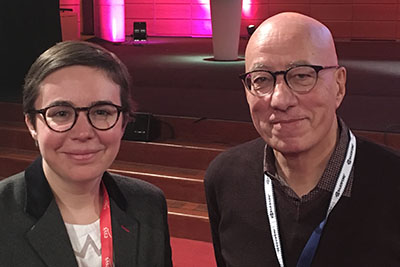
Fenestrated or branched endovascular aneurysm repair (F/BEVAR) for thoracoabdominal or complex aortic aneurysm patients “is not cost-effective at two years” compared with open repair, particularly for patients with para/juxtarenal abdominal aortic aneurysms and infradiaphragmatic thoracoabdominal aortic aneurysms.
“F/BEVAR have shown encouraging results in the treatment of complex aortic aneurysms,” said Morgane Michel (URC Eco Ile de France, AP-HP; Université Paris Diderot-Sorbonne Paris Cité; UMR 1123, INSERM, France), who presented the data at the European Society for Vascular Surgery annual meeting (ESVS; 19–22 September, Lyon, France). “However, these approaches also have limitations. There have been no randomised controlled trials comparing them with open repair, their use is associated with frequent repeat interventions, and they have high costs with no economic evaluation.”
Michel and colleagues used the French national discharge database as the source for the open repair patients in this trial, which records all acute-care hospital admissions with diagnoses, surgical procedures, length of stay, and so on, for payment purposes. For F/BEVAR patients, the multicentre, prospective, single-arm WINDOW registry was used, which collected case report form data and was merged with hospital discharge data. The comparison in this case was based on the two groups’ discharge data.
The open repair group consisted of 1,678 patients. The 268 F/BEVAR patients underwent these procedures as they were at high risk for open surgery, with an abdominal aortic aneurysm >50mm in men or >45mm in women, with or without thoracic aortic aneurysm >55mm for men or >50mm for women, and with an infrarenal neck <10mm in length or extent of the aneurysm to the suprarenal aorta. Emergent and ruptured aneurysms and aortic dissections were excluded.
Open repair patients had the same exclusion criteria as in the registry, whenever possible, Michel said.
The F/BEVAR cohort was significantly older (71.6 vs 69.2 years, p<0.001). There was no difference in Charlson index between the groups, but dyslipidemia, hypertension, chronic pulmonary disease and congestive heart failure were more frequent and peripheral arterial occlusive disease was less frequent for F/BEVAR patients.
For analysis, the research team used a multivariate Cox model, propensity score matching between F/BEVAR and open repair patients based on age, sex, type of aneurysm and Charlson index, and bootstrap analysis.
At two years, the overall mortality for the F/BEVAR group was higher but not significantly so than for the open repair group. Similarly there was no difference between the two groups for para/juxtarenal abdominal aortic aneurysms, infradiaphragmatic thoracoabdominal aortic aneurysms, and supradiaphragmatic thoracoabdominal aortic aneurysms. Multivariate regression found no association between mortality and F/BEVAR treatment. After propensity score matching (n=720), matched mortality was identical in the two groups.
Patients were more likely readmitted as a result of a cardiovascular event in the F/BEVAR group, and the mean number of readmissions per patient was higher for F/BEVAR than for for open repair.
The two-year mean cost for all F/BEVAR patients was significantly higher than for open repair patients. The difference was also significant for para/juxtarenal aneurysms and infradiaphragmatic aneurysms, but not for supradiaphragmatic.
“F/BEVAR is more costly and less effective than open repair at two years,” Michel told delegates. “In the population-matched with propensity score, the incremental cost-effectiveness ratio is €405,960,000 per death averted. As such, this approach is unlikely to be cost-effective.”
“These results are robust to sensitivity analyses, and F/BEVAR does not appear to be justified in patients who are eligible for open repair, particularly patients with para/juxtarenal abdominal aortic aneurysms and infradiaphragmatic thoracoabdominal aortic aneurysms.”













